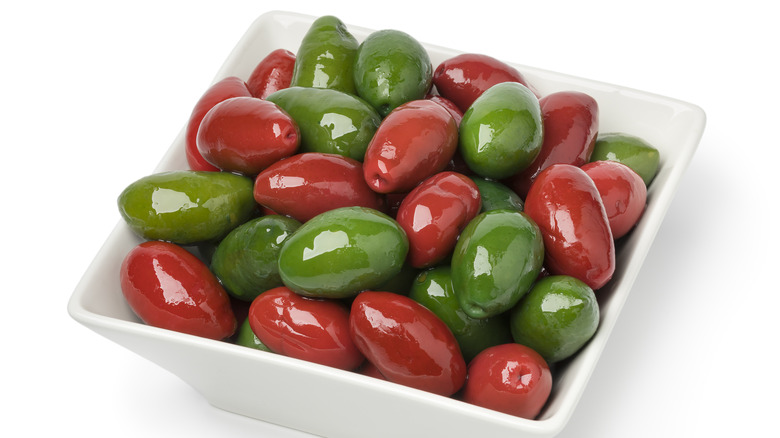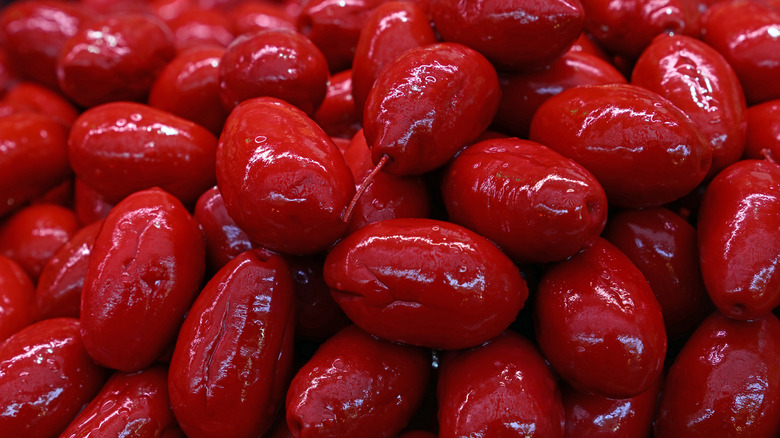Where Red Olives Get Their Unnatural Color
When most people think of olives, they picture little green or black fruits. The debate rages on as to which variety is superior — green olives are generally saltier than black since they are fermented, but black tends to have a milder flavor since they are harvested ripe (via MasterClass).
Of course, each type is best used in different ways, so the olive you prefer may have to do with the dishes you like to consume. For example, green olives are the absolute best type for martinis. And if you prioritize the nutritional difference between black versus green, good news! They are equally full of antioxidants and good bacteria for your gut, so you can let your tastebuds lead the way when picking your favorite.
But while these two varieties tend to dominate our cuisine here in America, there's actually a wide range of olives available worldwide. Brightland notes that there are hundreds of olive types, but about 150 of them are commonly eaten and used to make olive oil. Most of us have heard of kalamata, but other popular types of olives include manzanilla, arbequina, and picual. And they don't just come in shades of black or green. In fact, one popular Italian table olive is notorious for its bright red hue.
Cerignola olives are dyed with red food coloring
Cerignola olives, also known as Bella di Cerignola, are known for their mild flavor and large size. Although they are widely beloved, Cerignola olives are only grown in one specific area of the world. According to DeLallo, the Foggia region in Puglia, Italy, gets bragging rights for these fruits, as it boasts a warm, dry climate perfect for olive trees. This variety is even protected under the Protected Designation of Origin, meaning that olives are not considered true Cerignolas if grown elsewhere.
Typically, these olives are green and black, like most other types. However, you may occasionally see a red version in stores. While the unusual hue may make you think these olives are stronger or spicier, the color difference actually does not affect the flavor. According to Allrecipes, red olives are simply regular Cerignolas dyed to appear cherry red. Alfa Food Service notes that an artificial red food coloring is added during the curing process when the olives soak in a lye solution for about 10 hours. But peek below the surface, and you'll be able to see the olives' true (green) colors.
If you're looking to zhush up your holiday cheese board, red olives can provide a fun pop of color, and this is how they're commonly used, notes DeLallo. However, you don't have to wait for the most wonderful time of the year to enjoy these savory, ruby-red fruits.

